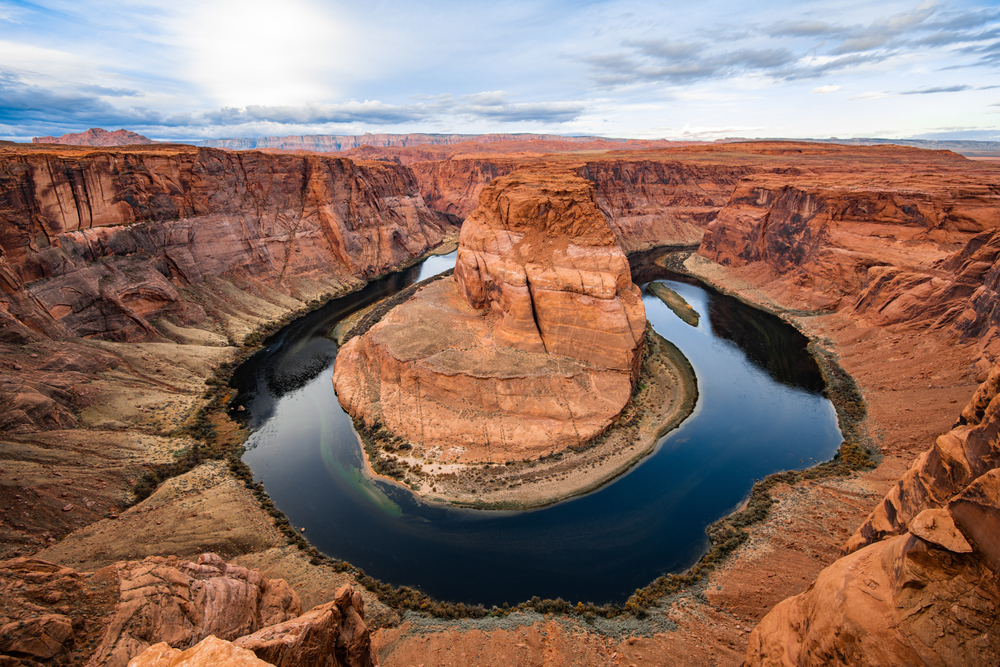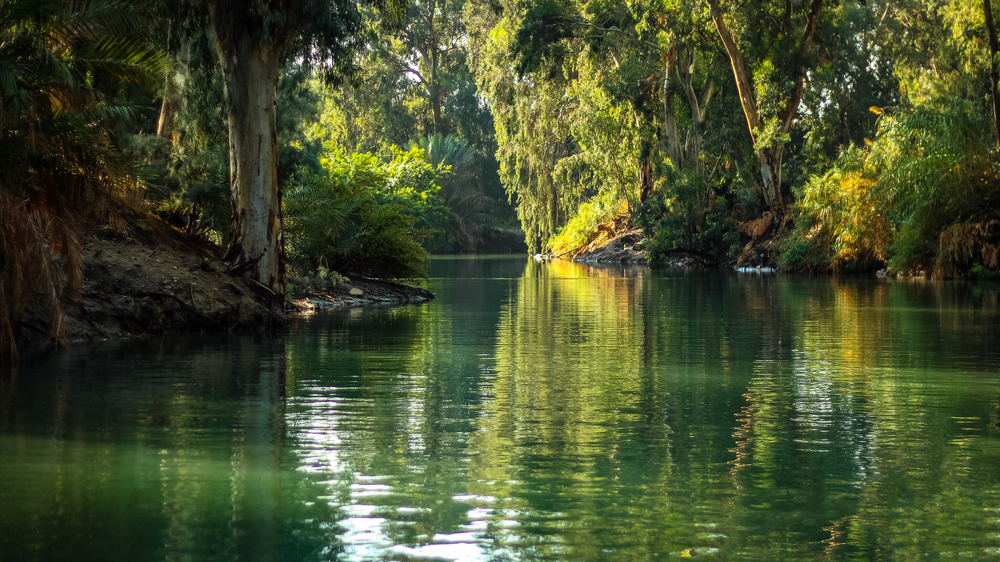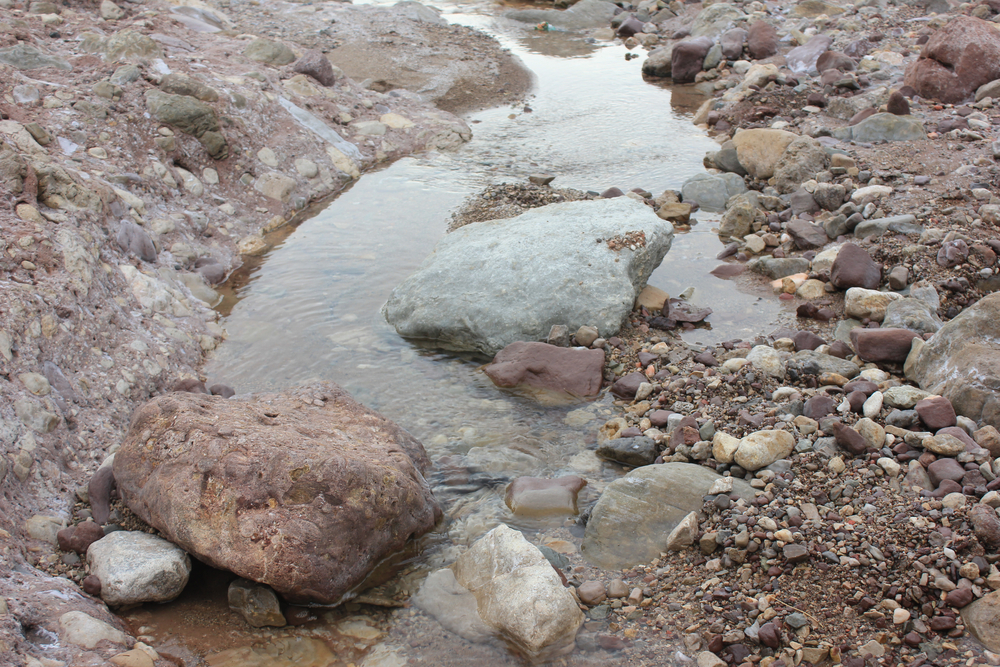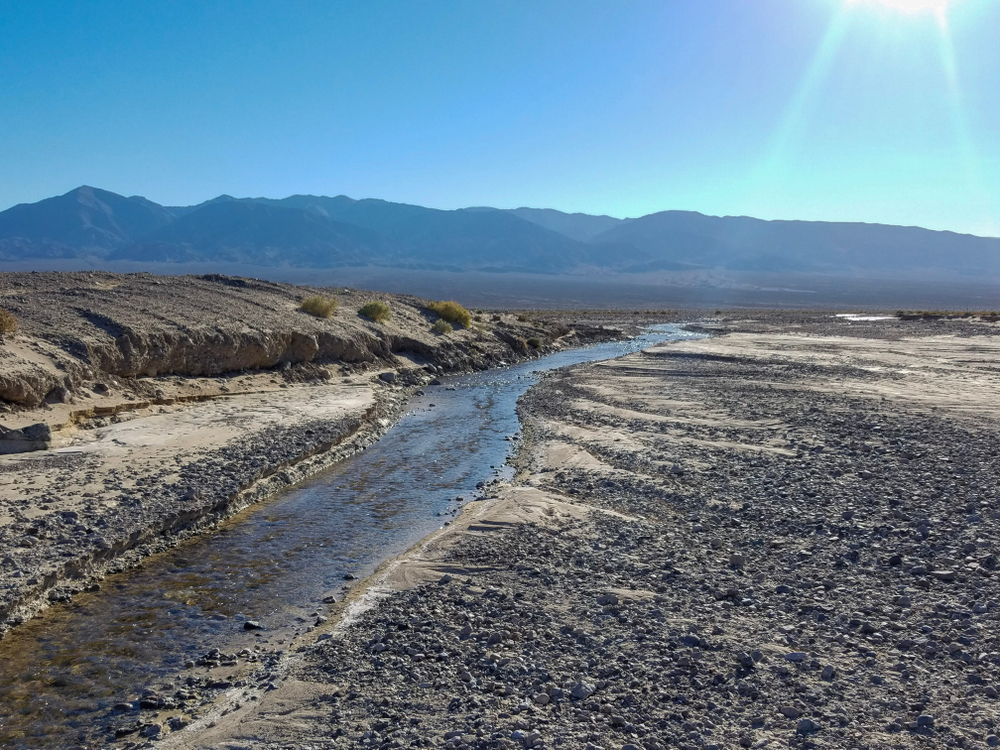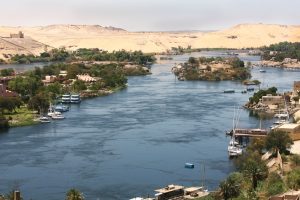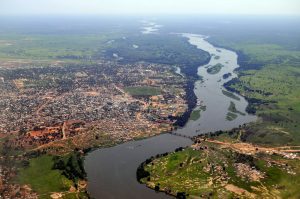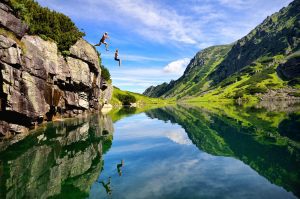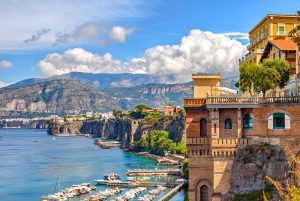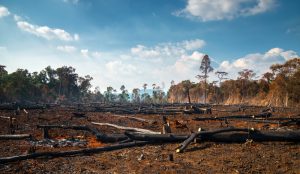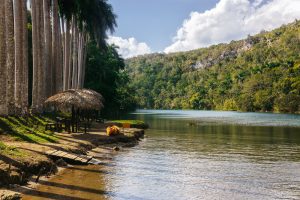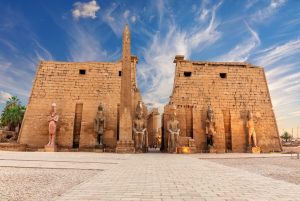Yes, there are sometimes rivers in a desert. However, this is not typical topography in a desert climate.
For bodies of water to survive as large bodies of water, they need the environment they are in to be conducive to supporting the water cycle. A desert does not typically offer that.
Still, there are some famous rivers that can last in a desert, such as the Colorado River and the Virgin River, water that feeds off of the Colorado River.
The Nile River in Egypt is another famous river that lasts in desert conditions. Some deserts experience short-term rivers called ephemeral rivers, but the arid and dry climate will evaporate them in time.
Learn more about deserts and their propensity for handling river climates here.
Yes, there are rivers in a desert on occasion, but this is not the norm. Some rivers, such as the Colorado River and the Nile River, are rivers that can last in a desert climate.
In other events, rivers known as ephemeral rivers are created that last a short time after some precipitation through a water cycle.
For the most part, however, rivers cannot last in a desert, and this is often how deserts are defined.
Table of Contents
What is a river?
A river is defined as a flowing body of water that is typically freshwater that seeks another body of water to empty into. Rivers are caused by a number of factors, the largest one being a water source that starts them.
As the old adage goes, water flows downhill, and that is because water follows the path of gravity.
The most basic definition of the water cycle is the flow of water through the Earth’s ecosystems. Although rivers do flow towards larger bodies of water, ultimately, most water in the world moves towards the ocean.
When it reaches the ocean, much of it evaporates into the sky and becomes clouds. When the temperature in the clouds reaches a certain point, precipitation will fall.
If it is cool, the precipitation will be snow or ice. In warmer climates, the precipitation will be rain.
When the temperature fluctuates suddenly or has specific drops, the precipitation becomes unpredictable and there will be sleet or hail.
When the precipitation falls, the water cycle begins all over again. Much of the water that falls goes into the ground, and when there is excess, or the water cannot be absorbed, rivers form and will flow towards larger bodies of water.
In a desert, any water that forms is typically absorbed or evaporated, making it very difficult for rivers to form.
What is a desert?
A desert is a landscape without water. Water is a basic survival need for humans and almost every other life form on the planet.
Plants, animals, people, cannot survive without water. This is why deserts are so barren, arid, and void of most signs of life.
Deserts do get rain, however, although it is not usually more than 10 inches every year. When it does rain, the life cycle of that water is very unpredictable.
In most cases in a desert, the rate of evaporation into the air will be faster and greater than the amount of rain or precipitation that fell, to begin with. That is because water can take on many forms – ice, water, and steam.
Are deserts all sand?
Films, cartoons, and novels have all led us to believe that deserts are big sandboxes. The reality is that deserts are only approximately 20 percent sand.
Some sand dunes in the desert occur when ocean waves freeze in the desert without any capacity to evaporate effectively. Primarily, deserts are plains.
They are terrain that consists of gravel and rock that, for the most part, has been flattened into bedrock.
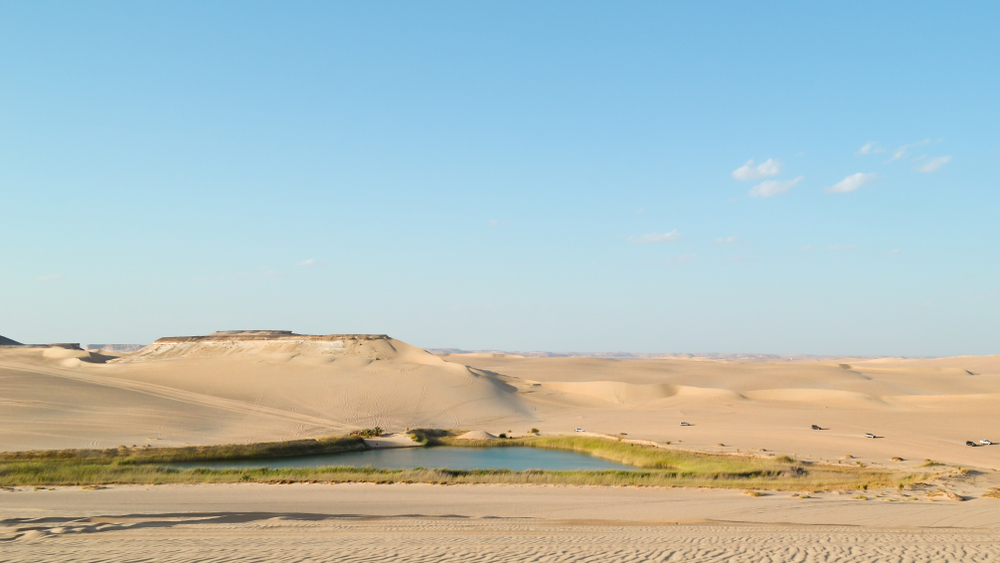
In some bedrock locations, water bodies such as playas and ephemeral rivers can develop, and desert lakes do exist. So do oases.
An oasis is an area of the desert that can sustain some moisture and as such sustains some life and vegetation. Many oases in the desert are man-made or artificial, but they are not the “fantasies” that the cartoons have depicted them as in days of yore.
This is simply a body of water that develops after the water table reaches ground that is cool enough to sustain it. Habitation can survive here.
What is the typical waterfall in the desert?
A typical desert waterfall every year is approximately 10 inches, but that will vary. One year, 44 millimeters or two inches of rain was recorded in the Sahara Desert over a three-hour period.
It is common to have storms in the Sahara, with storms being considered as rain falling at a rate of 1 millimeter per minute.
When water stays in the desert, lakes, and rivers can form. Rain will form into a drainage basin and when this water lasts, lakes and rivers develop.
If it doesn’t, a canyon in the desert will be the result. Lakes and rivers need depth to form, and when that depth dries out, a canyon is a geographical outcome.
When a small lake goes dry permanently, there will be a layer of salty crust on the surface that remains. This is also called hardpan or playa.
Playas are more common in deserts than rivers, and there are hundreds in North America. Some have been there since the Ice Age.
Does desert terrain support river formation?
Overall, both the climate and terrain make it difficult and typically impossible for deserts to sustain river formation. When hills are formed by lava and rolling sandstone and limestone, plains and plateaus are formed.
There might be some gullies formed in the plateaus as a result of weathering.
A narrower shape of the plateau is called a butte, and these are all rock structures. The rock that forms in the desert makes it difficult for gullies and canyons to form that could sustain a river body in a desert.
Even without the climate, rivers have a difficult time thriving here.
What are ephemeral rivers?
Ephemeral rivers are rivers that flow only during rainfall, and the desert is home to many of them. In some cases, these are simply temporary rivers.
When these rivers form, they typically drain into a basin of land that is landlocked, and then this water will evaporate.
The end result is a body of land that is salty and contains minerals from the rainwater. The precipitation that causes ephemeral rivers can be anything.
In Iraq one year, the Arabian desert was home to a massive onslaught of hail and ice in a storm, and an ephemeral river formed. That river is not there today, but it did drain into a land basin that left some cavernous activity.
Do flash floods cause rivers?
Flash floods do cause rivers, but in a desert, they will often become ephemeral rivers. These rivers have a very difficult time being absorbed by the ground and flowing downhill in any way.
Rain falls, meager as it does in the desert, and a stream could develop.
For a flash flood to happen, there needs to be heavy rain without adequate drainage places. Flash flooding occurs after heavy rainfall and the flooding happens quickly after, giving it the name flash flooding.
When flash floods occur in deserts, they can produce a narrow canyon or gully where rivers or lakes can even eventually form if enough water arrives to support that.
Does the Colorado River run through the desert?
The Colorado River does run through the Mojave Desert, the Great Basin Desert, and the Sonoran Desert. It supplies water to the states of Utah, Arizona, New Mexico, California, Nevada, Colorado.
Much of the water formed here has shaped history in each of the states that the Colorado River runs through. On the other side of the Hoover Dam is a two-year water supply that has its origins from the Colorado River.
The Rocky Mountains have a lot to do with the formation of the Colorado River. When the snow of the mountains melts and moves downhill, it has to find a place to drain.
This drainage began as a trickle once and is now the mighty Colorado River.
Where is the Amargosa River?

The Amargosa River is another river that has been formed as a result of precipitation, and it has survived desert conditions.
That is because it does not solely run through desert land, and, like the Colorado River, has mountains and other water cycle components that contribute to its health.
The Amargosa River is in Beatty, Nevada, and it ends in Death Valley National Park. This river is 125 miles long and has traveled approximately 50 miles to form.
A lot of its river is under the ground, but much of it is flowing through Amargosa Canyon to sustain some habitat and species in this arid section of the United States.
Is the Mojave River in the desert?
Yes, the Mojave River runs through the Mojave Desert. This river is a great example of how out of place a river looks in a desert.
A desert river typically looks like a body of water that just landed in a dry community that can’t sustain it, and the Mojave River looks exactly like that. Still, it is a unique river that, like the Amargosa River, has most of its water underground.
The water in the Mojave River sustains the sand, as opposed to the oceans, as so many other rivers do.
It flows primarily through Apple Valley and into the Afton Canyon until it reaches Soda Lake.
Where is the Virgin River?
The 200-mile long Virgin River runs through the Mojave Desert and is a product of Cascade Falls. The river runs through Nevada, Utah, and Arizona.
Its north fork starts at Cascade Falls, moves through Navajo Lake, and runs through Zion National Park in Utah before traveling through Arizona and then emptying into Lake Mead.
This river has the climate of the Mojave Desert ecosystem and follows seasonal weather in both winter and summer. It is strong enough to support some flora and fauna as well.
Some say the Virgin River was named after an 1827 politician named Thomas Virgin, but others defer the origin of the name to the indigenous people who thought of the Virgin Mary when they named the river.
It is a river that has been able to sustain itself, and the life around it, over hundreds of years despite its exposure to the desert climate.
Explore Rivers in the Desert
Yes, there are rivers in deserts all over the world, but they are few and far between. The climate of deserts just does not support river formation or sustaining rivers.
Still, it can happen. When rivers such as the Nile River, the Colorado River, the Virgin River, and others survive in the desert, they create a crucial habitat around them for plants and animals.

